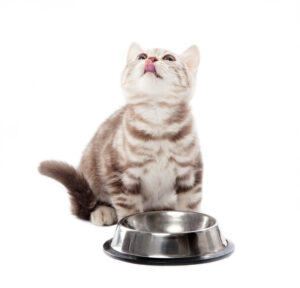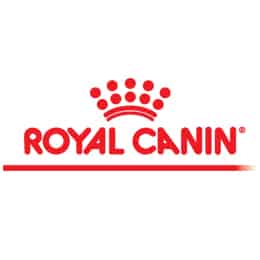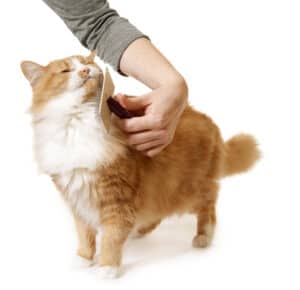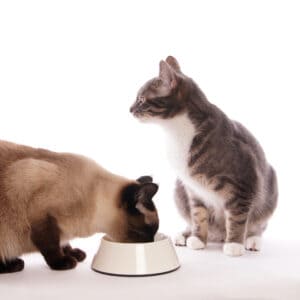 Lots of cats enjoy the safety and comfort of an indoor lifestyle, secure from risks like traffic, outdoor diseases, and predators. But without the proper nutrition, they can also be more likely than outside cats to develop conditions such as diabetes, urinary crystals, and hairballs. In this article, we’ll consider what our feline friends require to stay in great shape and review the best cat food for indoor cats on the market today.Read on to discover what the best indoor cat food brands are, and what products can help your cat stay agile, lean, and happy!
Lots of cats enjoy the safety and comfort of an indoor lifestyle, secure from risks like traffic, outdoor diseases, and predators. But without the proper nutrition, they can also be more likely than outside cats to develop conditions such as diabetes, urinary crystals, and hairballs. In this article, we’ll consider what our feline friends require to stay in great shape and review the best cat food for indoor cats on the market today.Read on to discover what the best indoor cat food brands are, and what products can help your cat stay agile, lean, and happy!
Quick Review: Top-4 Foods For Indor Cats
Shopping For the Best Indoor Cat Food
So, what is the best cat food for indoor cats? What you choose for your kitty will depend on their particular needs. Consider your cat’s lifestyle, his preferences, what you would like to get from a nutritious, delicious kitty chow.
Common Health Conditions of Indoor Cats
When shopping for the best indoor cat food, owners can now choose from a variety of top formulas that address our indoor kitties’ unique requirements. Here are some common conditions that tend to afflict indoor cats, and how different diets combat these issues.
- Obesity: Compared to outdoor kitties, indoor cats have fewer opportunities to run, hide, and play freely. On the whole, they may burn less energy than a cat who can explore the yard, climb trees, and so forth, and they are at greater risk of developing obesity and diabetes. If this sounds like your cat, try looking through our reviews for the best cat food for overweight indoor cats.
- Urinary Crystals and Urinary Tract Infections: For some reason, indoor cats (and especially middle-aged cats), are more likely to develop feline lower urinary tract disease (FLUTD) than outside kitties. In a lot of cases, urinary crystals and related infections can be prevented when you ensure your cat has sufficient water in its diet. In this case, you might want to look for the best canned cat food for indoor cats.
- Hairballs: Felines are very clean – they love to groom themselves and one another as a way of bonding. Unfortunately, hair build-up in the digestive tract can sometimes lead to coughing, vomiting, and complications due to the formation of hairballs. These furballs aren’t unique to indoor cats by any means, but can often be prevented with the best cat food for indoor cats with hairballs.
With these in mind, let’s look at what a great indoor cat food should include!
How much food should I feed my indoor cat?
There is no net answer of a proper amount to feed your indoor cat. Their daily food intake will depend on their age, their current weight, their daily exercise, and even the environment in which they live. First, let’s start with a ballpark range for you to get a general idea of their suggested feeding amount based on weight.
5lbs – ¼- ⅓ of a cup a day
10lbs – ⅜ – ½ of a cup a day
15lbs – ½- ¾ of a cup a day
First, it’s important to make sure your cat is conditioned to scheduled feedings. Free feeding is a common factor in obesity and other medical conditions in cats, so it’s important to stick to scheduled feedings twice daily. This is also handy for keeping an eye on how much your cat is consuming each day, as it;s normal for cats to stop eating when they become ill. When cat’s are free feeding, it becomes challenging to track their intake.
Once you start with a feeding amount, see how your cat reacts to this. If your cat seems satisfied after feeding and quickly calms after eating their meal, then this is a great amount to continue. If your cat is young, active, and seems to continue to scream at you and imply that they are still hungry after they finish their food, then you can increase this amount.
It’s also important to keep your cat’s activity level in mind. If they are a young and active feline with a slender frame, then you may need to increase this feeding amount. If your cat is quite lazy and spends most of their time lounging around, then it’s best to stay in this recommended feeding range.
Make sure to keep your cat’s body condition in mind as you are trying to determine the best feeding amount for your cat. If they ever seem too thin or too heavy, it may be time to adjust their feeding amount. It’s a good idea to have your veterinarian involved in this process, as they can help you judge your cat’s body score and any diet you are offering them.
What Ingredients Should The Best Indoor Cat Food Include?
As carnivores, all cats – indoor or outdoor – need quality protein to develop and maintain strong, flexible muscles. They use fat for energy, skin protection, and coat health, and they rely on essential minerals and vitamins to stay in tip-top condition. So when you look for indoor cat food, try to choose one with:
- Lean animal proteins. Ideally, these should be the top ingredient in your cat’s food. Our feline friends thrive on whole, lean meats such as turkey, duck, chicken, and fish – delicious!
- Natural fats. The best indoor cat food should have not only fat calories for energy, but it should include Omega fatty acids to promote shiny fur and soft, strong skin.
- Supplements or fruits and vegetables. Cats are carnivorous creatures, so they do not rely on veggies and fruits for their core nutrition. Nonetheless, these can be excellent sources of both dietary fiber and the micronutrients that help your feline friend flourish.
- Taurine. Taurine is an essential ingredient in a cat’s diet, whether they are indoors or outdoors. Since cats get taurine from quality meat sources, it’s important to make sure that their protein is coming from a real meat source from animal tissues, and not a meat meal or byproduct.
Best Indoor Cat Food Brands
Shopping for the best cat food for indoor cats? Whether it’s canned or dry food that you’re after, we’ve picked and reviewed the very top brands that you can depend on. From Blue Buffalo and Nulo to Halo and Purina, there’s plenty of choice for every cat!
We recommend these best indoor cat food brands:
- Blue Buffalo Wilderness;
- Natural Balance for Indoor Cats;
- Purina Beyond Indoor;
- Nulo Grain Free Dry Indoor;
- Wellness CORE Indoor;
- Blue Buffalo Weight Control;
- Purina Pro Plan Indoor Care;
- Pride by Nature’s Variety Instinct;
- Halo Grain Free Indoor;
- Tiki Pet Foods Canned; and
- Royal Canin Indoor Adult.
Best Dry Cat Food for Indoor Cats
- Blue Buffalo Wilderness High Protein Grain Free, Natural Adult Dry Cat Food
Pros
- You’ll never, ever find soy, wheat, maize, or by-products of these grains in Blue Wilderness food, which is 100% free from grains;
- It’s made with succulent boneless duck as the primo ingredient, giving your kitty all the quality protein it requires for great muscle maintenance;
- Your cat will also get a variety of top-notch protein from this recipe, which includes Menhaden meal, pea protein, and egg;
- Includes Omega fats, giving your cat a well-rounded diet full of coat- and skin-soothers; and
- Features a whopping 40% protein for our feline carnivores!
Cons
- Not this time! Blue Wilderness crafts some of the very best dry cat food for indoor cats.
- Natural Balance L.I.D. Limited Ingredient Diets Dry Cat Food for Indoor Cats, Grain Free
Pros
- With added fiber for hairball and hair loss control, this recipe is the best cat food for indoor cats with hairballs;
- It’s a limited ingredient recipe which is ideal for allergic and intolerant kitties – salmon is the sole meat ingredient used here;
- Every bag is tested numerous times for safety and quality;
- Other protein-rich inclusions in here: peas, garbanzo beans, and salmon meal; and
- It delivers a rich 30% protein for your indoor cat while using a lean formula to promote a healthier weight.
Cons
- Some picky cats may not like the smaller kibble size of this recipe.
- Purina Beyond Grain Free, Natural, Adult Dry Cat Food
Pros
- Topping our ingredients list, we have salmon – full of healthy fats and rich in protein for a novel taste that cats just love!
- This recipe is rich in protein, with 33% for our obligate carnivores;
- Uses zero chemical preservatives, flavors, and dyes – it’s preserved with mixed tocopherols;
- Purina Beyond Grain Free Indoor is fortified with minerals and vitamins such as B12, B6, D3, E, and Vitamin A; and
- It comes in three convenient sizes ranging from 3 pounds to 11 pounds.
Cons
- Some owners have complained that the kibble is too big for senior kitties.
- Nulo Grain Free Dry Indoor or Adult Trim Cat Food with BC30 Probiotic
Pros
- Uses lots of digestive fiber to keep your cat feeling satisfied and help avoid overeating or obesity;
- Includes L-Carnitine, which promotes fat metabolism and healthy digestion;
- Salmon is the headlining ingredient in this lovely recipe, followed by protein-rich turkey and chicken meal;
- Includes lots of other whole proteins, such as cod and peas; and
- It provides your kitty with 42% protein, so they can stay healthy, supple, and strong!
Cons
- It could be considered expensive by some owners.
- Royal Canin Indoor Adult Dry Food
Pros
- Quality protein from real animal tissues
- Added fiber for prevention of hairballs
- Controlled calories to help reduce obesity
- Easily digestible proteins
Cons
- This diet does contain chicken, so cats with poultry allergies may not be able to enjoy this diet.
Best Grain Free Dry Cat Food: Indoor Cats
- Wellness Core Natural Grain Free Dry Cat Food Indoor
Pros
- Includes 38% high-quality protein from meats such as chicken and turkey, to maintain strong, agile muscles;
- Your cat will also get Omega acids from this mouthwatering kitty recipe, keeping their fur shiny and their skin supple;
- Doesn’t include any eggs, corn, or soy – quite common potential allergens for our feline friends;
- Features L-carnitine which plays an amazing role in your cat’s blood function; and
- It’s all naturally-colored, preserved, and flavored. Meow!
Cons
- None! We love this filler-free Wellness Indoor recipe, which even contains glucosamine for joint health!
Best Cat Food for Overweight Indoor Cats
- Blue Buffalo Weight Control Natural Adult Dry Cat Food
Pros
- Wholesome chicken is the top ingredient here, helping your kitty develop great muscle tone while keeping it full between meals;
- Uses natural ingredients to deliver optimal nutrition, and some of the great ingredients in here include peas, kelp, fish meal, and sweet potatoes. Yum!
- No artificial agents are used to preserve, dye, or flavor this kibble;
- Contains flaxseeds, a great anti-oxidant boost, and source of Omega fatty acids; and
- Gives your beloved kitty 30% protein. Delicious!
Cons
- It contains grains such as brown rice and oatmeal. Not for cats on a grain-free meal plan.
- Purina Pro Plan Indoor Care Adult Dry Cat Food & Wet Cat Food
Pros
- Contains 40% lean protein from meaty ingredients such as salmon, chicken, fish meal, and even soy;
- This is one of the very few indoor cat foods that you can free-feed to your kitty – it’s designed for it!
- Contains calcium for strong bones, egg for Omega acids, fish meal for glucosamine, and more of the good stuff;
- With lots of fiber, this is a great recipe for helping your best kitty friend with those pesky hairballs; and
- It includes healthy gut prebiotics to promote better digestion and a full, satisfied tummy.
Cons
- It does include some fillers, such as corn gluten meal and brewer’s rice.
Best Canned Cat food for Indoor Cats
- Pride by Instinct Grain Free Flaked Starlet’s Wet Canned Cat Food
Pros
- With a stunning salmon flavor, even the pickiest kitties will be queueing up for more;
- Made without any synthetic flavors, preservatives, or grains (yep, it’s grain-free!);
- Made in the USA, this recipe is developed and produced in facilities which practice stringent quality controls;
- Contains no potato, maize, filler by-product meals, or soy – a great choice for cats with intolerances; and
- Includes Omega 6 and 3 from quality ingredients such as chicken liver, flaxseed, and eggs.
Cons
- Some might consider it a little pricey…but this is top-of-the-line cat food for our indoor friends. Even just as a treat!
- Halo Grain Free Indoor Chicken Recipe Wet Cat Food
Pros
- Gluten-free and full of moisture, this is a top choice for kitties who can’t tolerate grains;
- Non-genetically-modified vegetables make this a healthy choice for ethically-minded owners;
- Features soft, healthy chicken to give your cat a lovely 11% protein;
- Natural chicken broth adds flavor and helps your cat stay hydrated – they’ll feel satisfied and full, as well as getting additional liquid in their diets; and
- Uses real salmon oil to up your cat’s Omega-acid intake and encourage a sleek, shiny coat.
Cons
- None – we think this is some of the best canned cat food for indoor cats on the market!
- Tiki Pet Foods Cat Canned Cat Food
Pros
- Contains no gravy, just great Ahi tuna consomme and exciting crab on top for texture;
- Made without any grains, to satisfy the tastebuds of gluten-free kitties;
- High in water content, to help your cat’s digestion and keep them hydrated – even if they don’t drink a lot of water;
- Naturally flavored with broth, for a fresh, crisp taste your cat will adore; and
- It’s made in the USA, so you can rest assured of great quality food!
Cons
- We’re not able to spot any flaws in this awesome Tiki cat food!
FAQ
What is the best cat food for indoor cats?
When you are searching for a diet to feed your indoor cat, you’ll need to look for the following ingredients in the diet of interest on the nutrition label:
A proper indoor cat diet should contain lean animal protein as the first ingredient, natural fats for energy and omega fatty acids, and nutritious ingredients such as fruits and vegetables for natural antioxidants. It’s also important to consider your cat’s age, weight, and activity level when choosing their diet and food intake.
How can I help to control my indoor cat’s weight?
They may live longer on average than outdoor cats, but indoor kitties tend to gain weight much more easily. Primarily, this is down to lack of exercise – they can’t run around as freely as their outdoor counterparts, and they may find less in their environments to keep them amused and playful. If you feel like your indoor cat is gaining weight, consult with his vet to see whether your suspicions are correct before you do anything.
Usually, a vet will be able to recommend some of the best cat food for overweight indoor cats, and our reviews above should be helpful. Some other important tips that may help:
- Stick to the recommended feeding guide for your cat’s weight and size – don’t free-feed your cat or they may overeat.
- Ensure kitty gets enough water at all times.
- Keep your cat stimulated and active by playing with him – buy some cat toys, a cat tree, or a pointer that will encourage them to chase, jump, and run!
What are some risks that indoor cats face?
When you keep your cat safely indoors, you can generally be sure that they aren’t going to be in danger from traffic, wild animals, and other hazards of the great outdoors. However, they do face their own set of risks – so it’s good to be informed and look after your kitty properly.
For whatever reason, inside cats tend to be more susceptible to developing urinary tract infections. Here you can find our reviews on the best cat food for urinary crystals. Keep their litterboxes clean and give them access to clean water all the time. Kitties who live indoors are also less active than outdoor cats and can be more prone to diabetes and obesity – see our answer to the previous question for more advice on how to avoid this. Last, but not least, they can become bored, stressed, or anxious if they don’t get enough human or feline interaction. Always make sure you spend quality time with your cat to help avoid this.
Helpful Links



